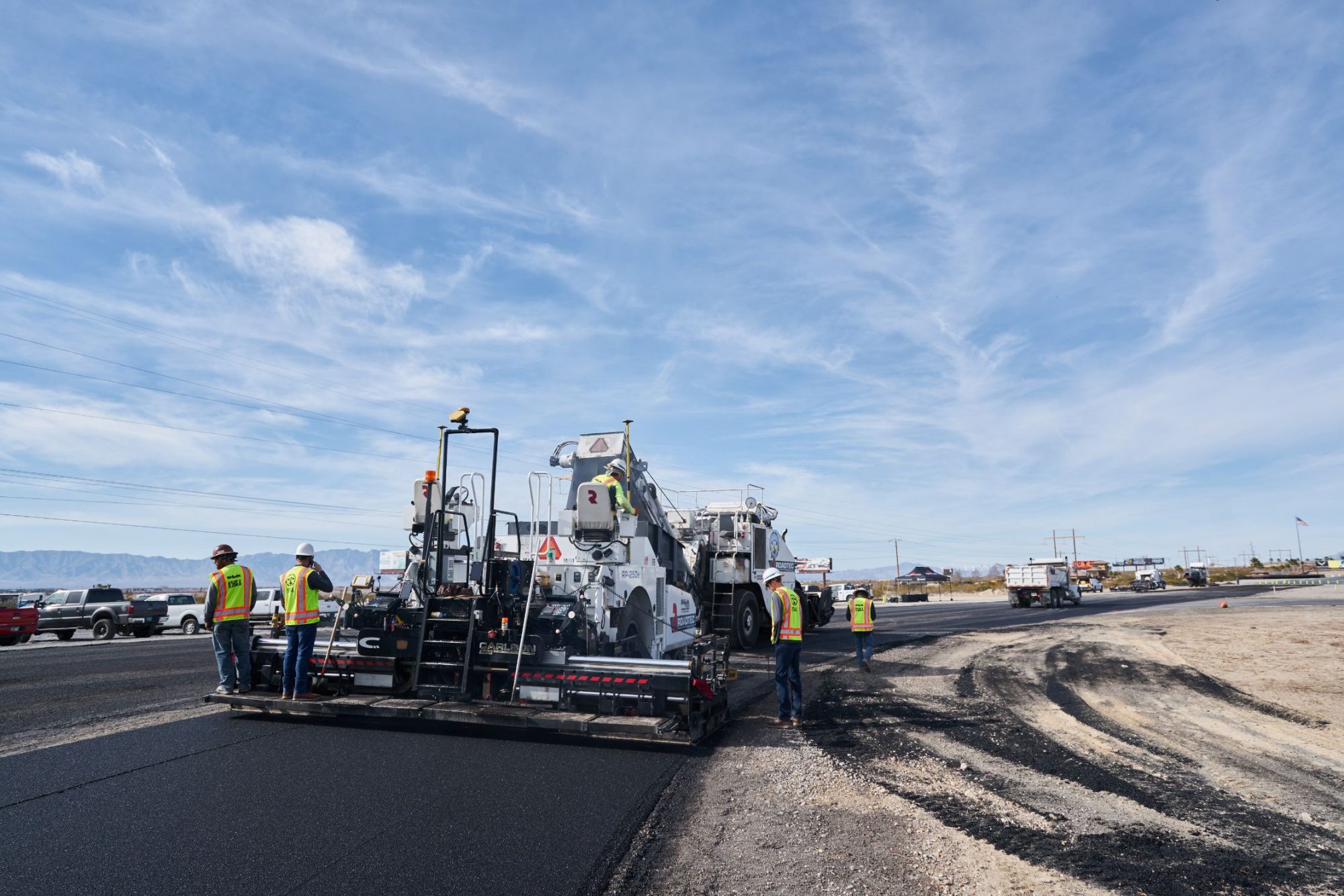Topcon’s Pavelink Connects All Project Stakeholders
BY AsphaltPro Staff

“When should I start producing mix? How much mix is needed across all my contracts? And what mix designs do I need to make today?” These are just a handful of questions asphalt producers have to answer at the start of each day.
At the paver, the questions are different: “Where is my next truck? What speed should I be paving to prevent stopping on the mat? And what might be causing segregation behind the screed, and how can I fix it?”
Although the questions at the job site and at the plant are different, Topcon Positioning Systems Inc., Livermore, California, thinks they could be answered with a single solution.
Pavelink is a cloud-based workflow management system that collects data from every step of the paving process and makes it available to all stakeholders in real time, including the asphalt plant, trucking, paving crew and office staff.
Pavelink offers the entire workflow access to real-time project information, eTicketing, haul truck tracking and route planning tools, as well as production, transport and paving rates. By tracking the entire process, Pavelink aims to give stakeholders the information they need to make decisions while improving efficiency and quality.
“By connecting in real time throughout the paving process, Pavelink can prevent over-producing and prevent stopping the paver to wait for mix,” said Marcus Utterodt, Topcon Product Manager of Paving. “With Pavelink, you can increase your efficiency and identify your weak points.”
At CONEXPO-CON/AGG 2020, Topcon showed off Pavelink’s integration with Topcon’s new Thermal Mapping system for asphalt paving. The Thermal Mapper monitors temperature of the mat behind the screed to identify temperature segregation issues.

Topcon’s Pavelink can be accessed via desktop or mobile device.
E-ticketing & Material Handling
with Pavelink
Once integrated with the plant, Pavelink can be used for e-ticketing. The weighing ticket is sent to Pavelink, which collects all information such as tons, mix type, temperature, loading date and time, and other relevant data to generate an e-ticket. The e-tickets generated are automatically shared with all stakeholders via the cloud.
“Normally the plant makes the mix, dumps it into a truck and hands the driver a ticket to pass off at the job site,” said Murray Lodge, Topcon’s Senior Vice President of Construction. “We’ve digitized that and now the paving crew and the office get that ticket immediately and automatically via the cloud.”
Pavelink can also be used to determine yield across the entire jobsite. Based on yield, the number of plants, each plant’s capacity, the estimated drive time between the plant and the jobsite, maximum paving speed, and truck tonnages, Pavelink calculates how many trucks are needed for the job to avoid paving interruption.
“The paver can only go as fast as the material is getting there,” Lodge said. “In most cases, I don’t know where the trucks are until they arrive at the job. If a truck isn’t there, I have to stop paving and I get a bump in the mat. With Pavelink, the crew knows when that truck is coming.”
Pavelink utilizes geofences at the asphalt plant and job site to know exactly when trucks leave the plant and arrives at the job site, and vice versa. Drivers can download a free app for iPhone and Android that can be used to plan routes to and from the jobsite and will track the mix en route, so the crew always knows when the next truck is scheduled to arrive.
“By tracking the location of the truck in real time and calculating ETAs, everyone can make smart decisions about the moment of pause, the speed of the paver, the production speed, etc.” Lodge said.
Pavelink at the Paver
At the jobsite, the Pavelink Sensorkit can be installed on the paver to track additional information, including when each truck starts and stops dumping mix, the temperature of the mix in each truck, the temperature of the mix behind the screed, the speed of the paver and paving width, even as extensions go in and out.
The Sensorkit consists of five different sensors. An infrared sensor is mounted near the paver undercarriage, depending on the model of paver, and measures the surface temperature of the mix. A second temperature sensor at the rear of the paver measures mix temperature as it drops from the conveyor to the auger area. The third sensor is an unload detection sensor that can be mounted on the engine hood of the paver, or on the shuttle buggy or material transfer vehicle to detect the unloading times of each truck. The fourth and fifth sensors, one on each side of the paver, track the extensions of the screed to know the exact paving width. The data captured by the sensors is then available within Pavelink.

The recently-launched Thermal Mapper, seen here mounted on a paver, offers a sixth possible sensor that works with Pavelink.
From the width and speed of the paver, Pavelink automatically determines the overall yield of the project. “Maybe the crew thought they needed a certain number of tons at the beginning of the day, but as they go along, they realize they’re putting down less mix than expected,” Lodge said. “They can look at the data in Pavelink and realize they can cancel the last truckload, that might have otherwise gone to waste.”
The recently-launched Thermal Mapper offers a sixth possible sensor that works with Pavelink. The Thermal Mapper is a camera scanner that measures real-time heat across the width of the entire mat behind the screed. The operator can monitor the results on his or her own using a tablet or smartphone.
“We know that areas of segregation fail first,” Lodge said. “Having that information immediately gives the crew a chance to fix problems with segregation as they arise, instead of realizing there was a problem after the fact.”
“Since we know the exact paving width and which type of truck has arrived, we can know which meters of the mat were paved by each truck,” Utterodt said.
The foreman can call the plant to see if there’s a problem, or perhaps there are too many trucks and there’s a line waiting ahead of the paver while the mix is getting cold. Foremen who may be working on multiple jobs can also use the Pavelink app to check in on jobs in real time.
Pavelink can also be used alongside Topcon’s SmoothRide tool. Before a job begins, SmoothRide allows contractors to scan the road while driving it and use that information to create a replica of the existing surface. That data can be put into resurfacing software to create a new surface profile that offers the smoothest ride while staying within yield requirements. Using both SmoothRide and Pavelink to determine a job’s yield will improve accuracy.
By collecting information from the entire paving process, stakeholders get a real time view of the ongoing project, Utterodt said. “In the end you get a more transparent jobsite.”
